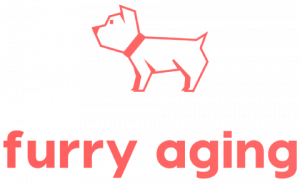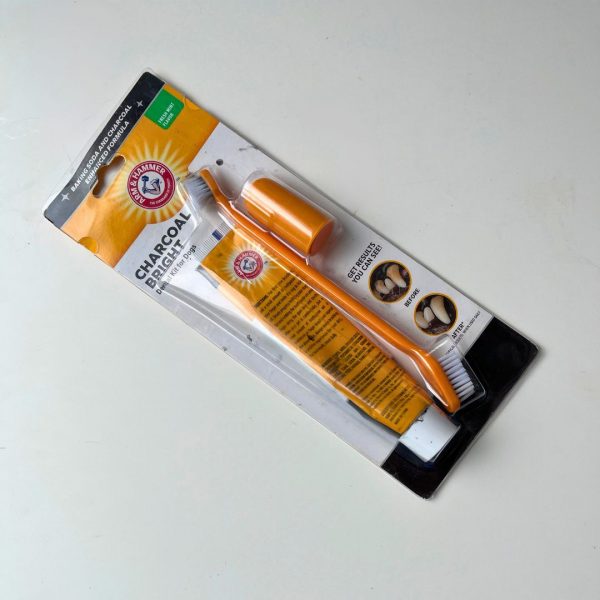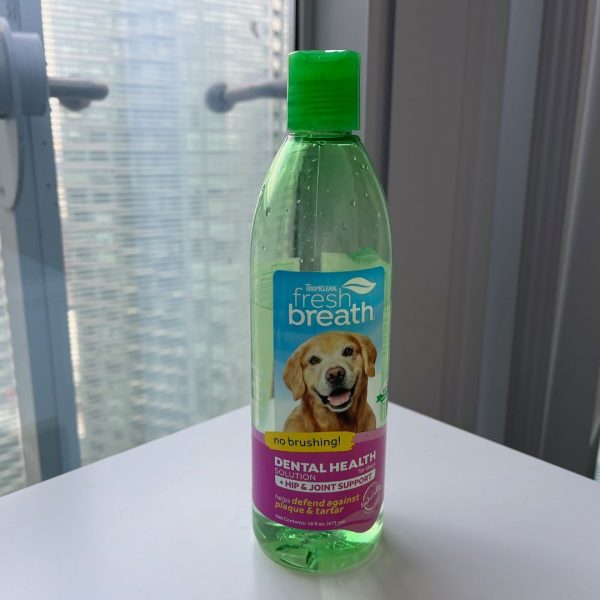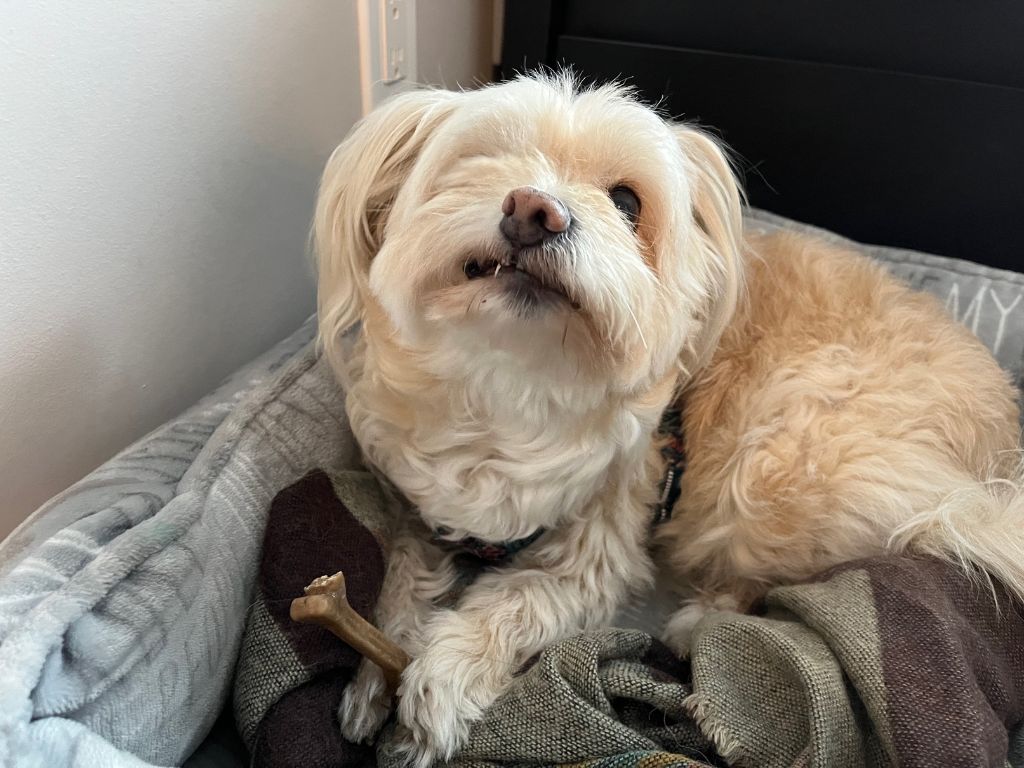
Dental problems are widespread among senior dogs, and they can significantly impact their well-being because they cause pain and decreased appetite. If your pet is already struggling with this, there are a few things you could do at home and under the vet’s care to help them improve their quality of life.
Let’s see what are those.
Tales from the Tails 🐕
This is Lola, a 9-year-old terrier. When I first met her, her mom said she wasn’t eating much. They needed to play and tease her to convince her to eat or feed her by hand. The first night Lola stayed with me, she was refusing all food and treats. We thought maybe she was sad because it was her first night away from her family.
Now she is staying with me for 3 weeks and, of course, my main concern was that she wouldn’t eat. But her mom made sure to bring soft and tasty homemade food, and all her dental products. I will talk about what products are helping her a bit later in this article.
After having her for over a week, I am starting to believe that her decreased appetite is due to dental problems. What makes me conclude this? Well, I’ve seen similar symptoms with other dogs who also have dental problems.

Dental Problems in Senior Dogs
- Plaque: It is a sticky coat rich in bacteria that covers the teeth.
- Tartar: It is a harder dental plaque that forms above the gums and causes inflammation and infection.
- Gingivitis: It is the inflammation of the gums. The gums become red and bleed.
- Gum recession: The gum line tissue, that surrounds the teeth, wears away and the teeth become loose and eventually fall out.
- Stomatitis: It is the inflammation of the mucous membranes of the mouth. More common in cats than dogs.
- Tooth root abscess: It is a severe infection that develops around the tooth root. This can cause a swollen face depending on where the tooth root is.
- Broken teeth or damaged enamel: Fractured teeth occur after trauma of chewing hard objects. The tooth becomes very sensitive to heat, cold, and pressure. It requires medical attention because creates pain and discomfort, and it gets worse if the dental pulp (nerve) is exposed.
What are the signs of dental problems?
First, you will notice that they are messy eaters. They will take pieces of the food out of the bowl put them on the floor, and eat from there.
They chew mostly on one side.
After eating, they will rub their face against a surface, such as a couch, carpet, floor, or bed.
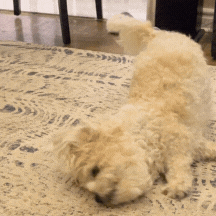
They may come to see the bowl and decide not to eat if they see hard kibble.
I’ve seen all of these signs not only in Lola but also in Mickey (14-year-old) and Dido (15-year-old).
Here are some pictures of my adorable messy eaters:
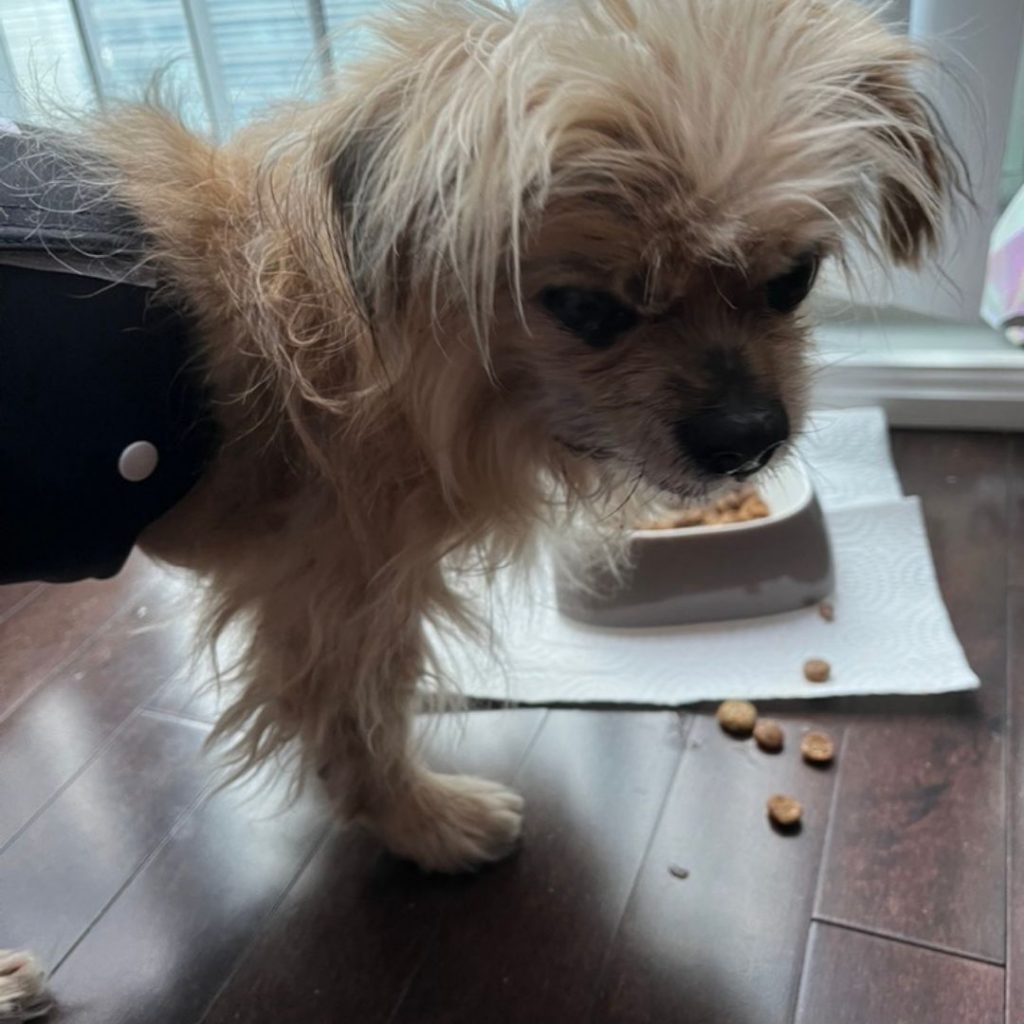
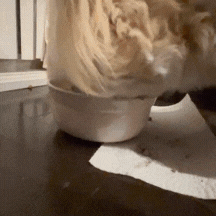
- Bad breath
- Swollen face
- Bleeding gums
- Wobbly or broken teeth
- Missing teeth
- Heavy tartar on the gums
Treatments for Dental Diseases
Gingivitis
- Antibiotics help decrease the number of bacteria in the mouth
- Pet mouthwashes containing chlorhexidine
- Remove the tartar.
Stomatitis
- Steroids help reduce inflammation
- Other options include pulse antibiotics and interferon therapy
Tartar
- The tartar is removed using an ultrasonic descaling device. Once the teeth are clean, they are polished with a special paste which helps to protect the enamel.
Broken teeth
- In senior dogs, the most common solution is to remove the broken teeth
- There are other procedures to save the tooth such as root canal therapy and vital pulp therapy
Professional Dental Cleaning
Let’s see what happens during a professional dental cleaning for dogs:
- Your vet first examines and determines if a dental cleaning is necessary.
- Your vet will also perform pre-anesthetic blood tests to assess the dog’s kidney and liver function, as well as evaluate the heart and abdomen.
- Once the dog is under general anesthesia, the veterinarian will thoroughly examine the mouth, noting any abnormalities.
- After the examination, they perform tooth scaling using hand and ultrasonic scalers to remove plaque and tartar above and below the gum line.
- They polish the teeth to remove microscopic scratches and decrease subsequent plaque build-up.
- Your veterinarian will reach out to you during the procedure to discuss any additional necessary treatment.
👆🏼Important! Senior dogs may have underlying health conditions that need to be evaluated prior to the procedure. Preanesthetic tests and examinations for underlying disorders are typically performed to ensure the dog's safety.
Products for Dental Care
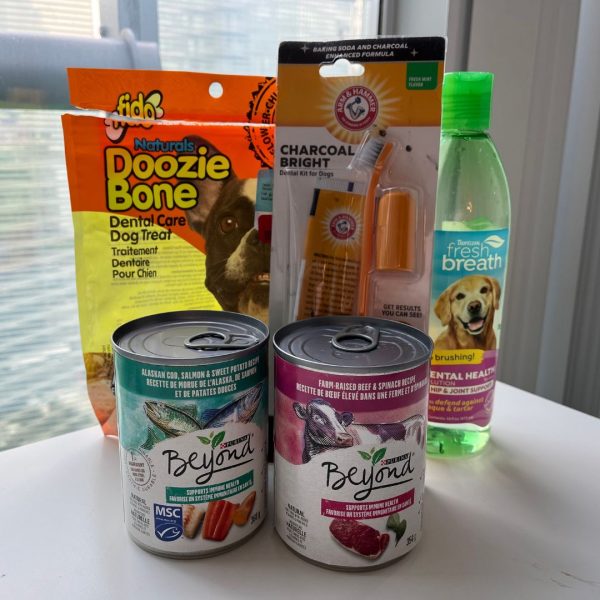
Soft Dental chews for senior dogs
These are treats designed to clean your dog’s teeth and massage the gums. It helps reduce plaque and tartar formation. They are usually given one per day.
Our picks:
- Greenies, petit size (Mickey’s pick)
- Doozie Bone (Lola’s pick)
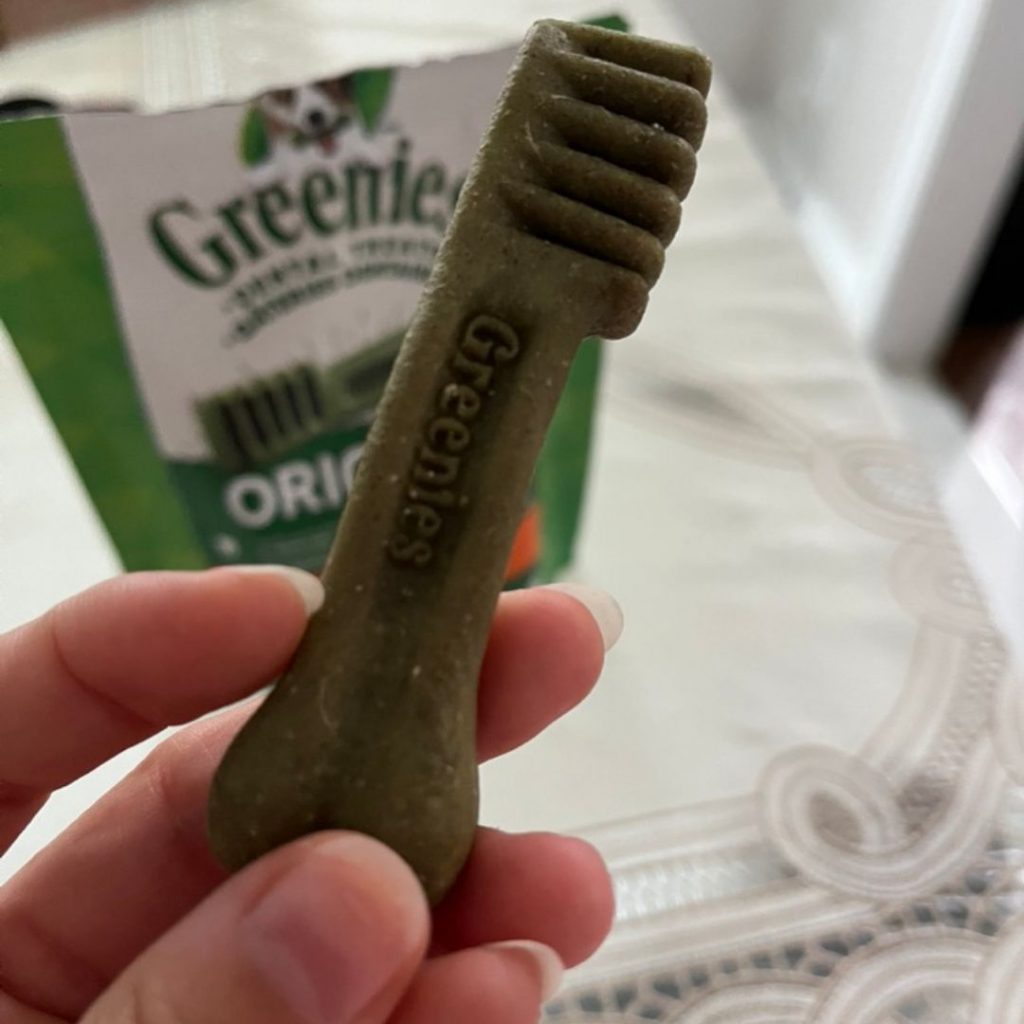
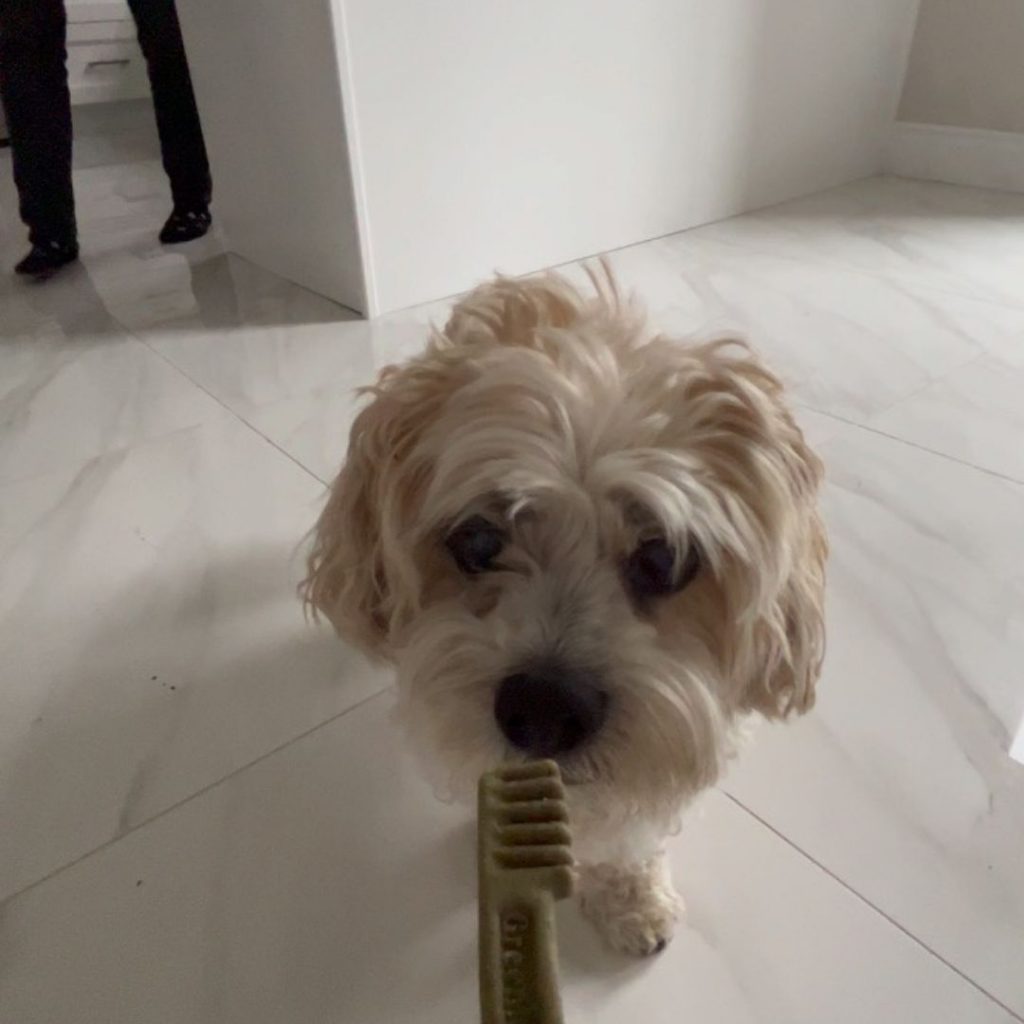
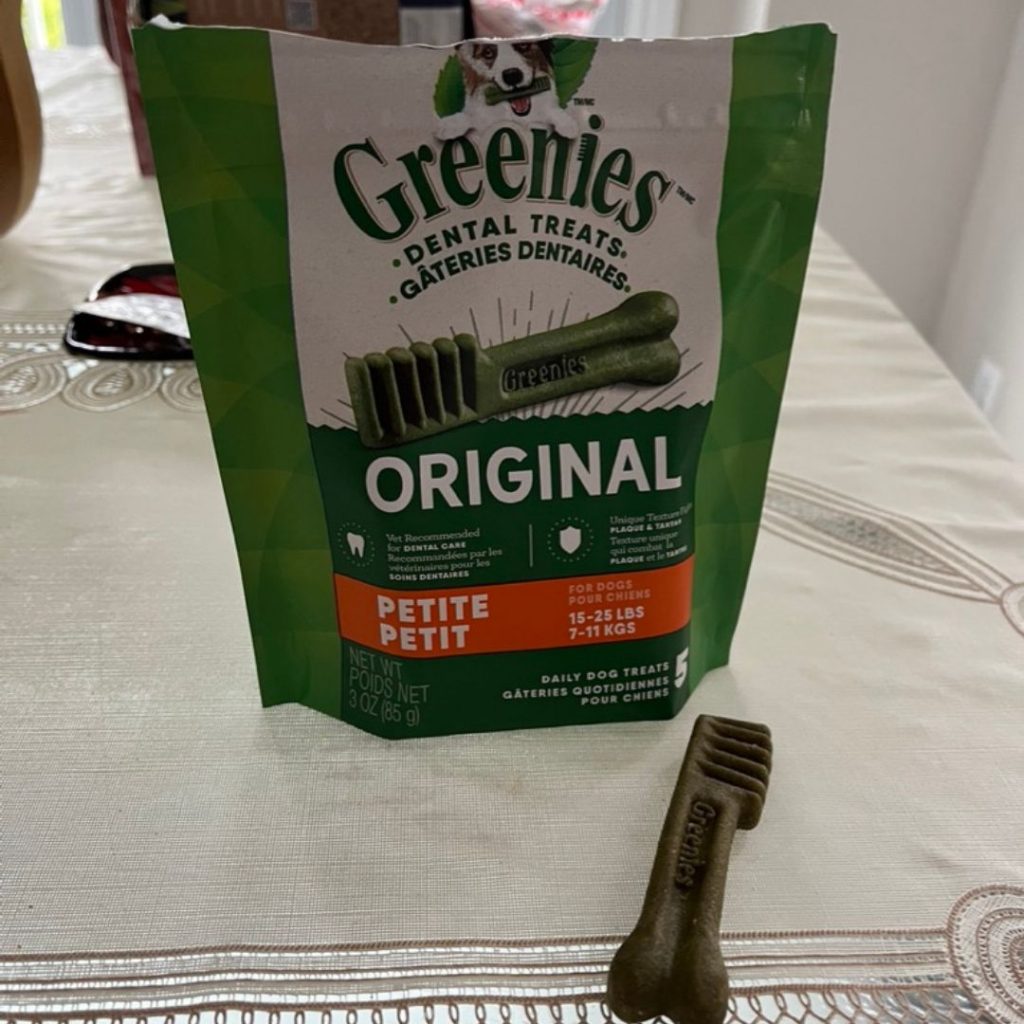
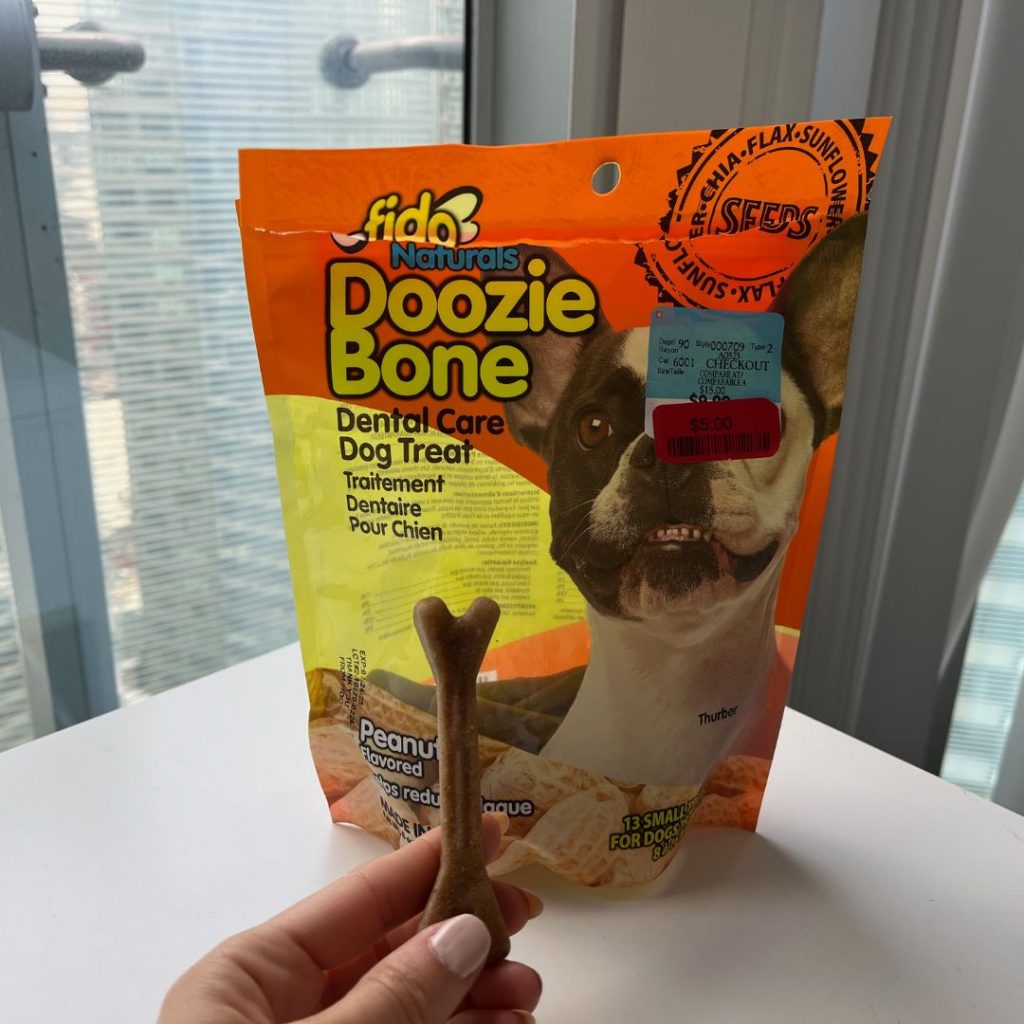
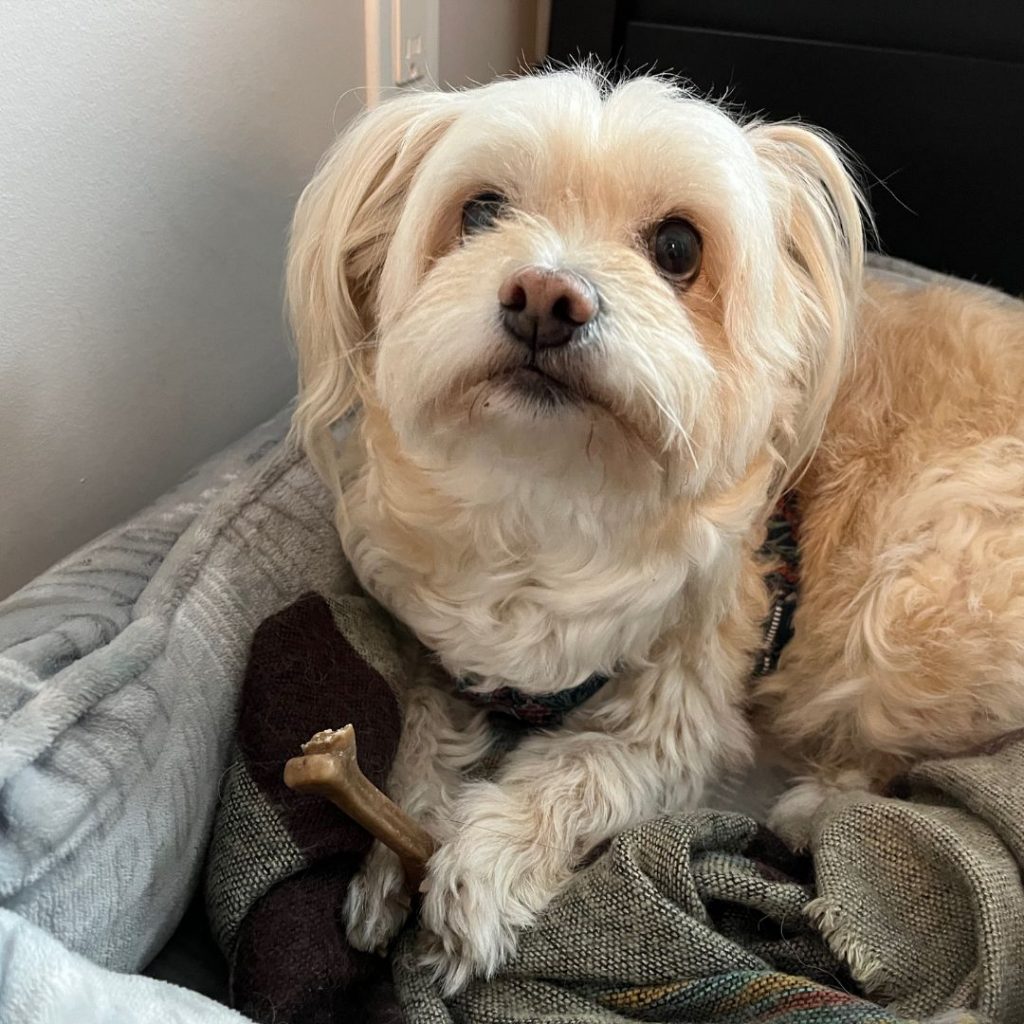
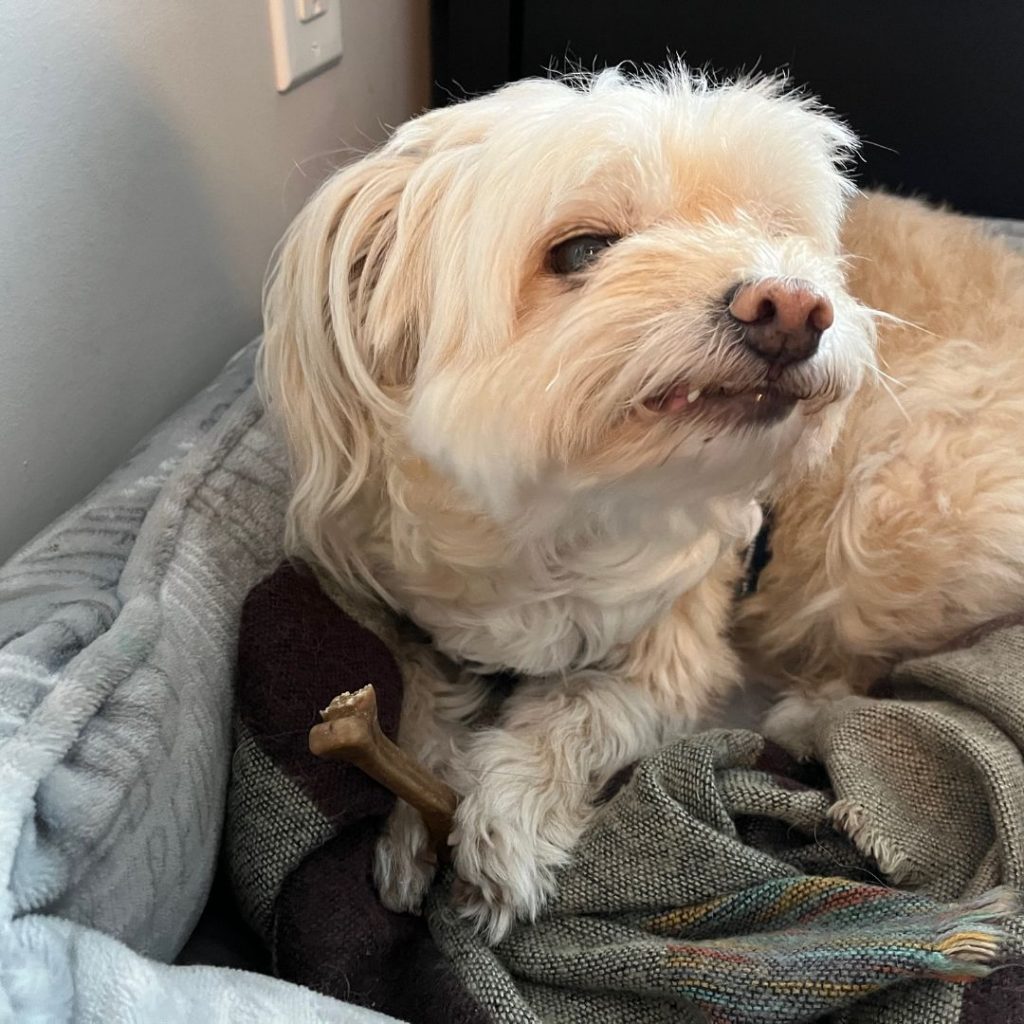
Toothbrush
Use a toothbrush and toothpaste designed for dogs. If this is your first time, start by putting a small amount of paste on your finger and invite your dog to lick it, then slowly progress to lifting the lips and rubbing your finger along the gum line and teeth. When your dog feels more comfortable put a small amount of toothpaste on the toothbrush and repeat the process.
Dental Water
This product is formulated to help defend against plaque and tartar and freshen your pet’s breath. Add 5 ml to 1 cup of water, twice per day.
Mouthwash
This helps decrease the amount of bacteria in the mouth, promotes healthy gums, and slows up tartar formation. Wet a cotton tip with the pet mouthwash and rub it over the teeth.
Best Foods for Senior Dogs with Bad Teeth
- Wet food is always a good option because it is soft and tasty. However, it is more expensive than kibbles.
- Homemade food is another option. For example, Lola is eating chicken liver. I mash the liver using a fork and add some of the liver water to get a texture similar to a puree. I add cucumbers as toppings because Lola loves them. The problem with homemade food is that is easy to end up with nutritional deficiencies. To avoid that, consider mixing it with commercial food. For example, you could add kibbles to the lover mix and they will get softer.
- Dental food. These are foods that have been proven to reduce plaque and tartar build-up. Ask your vet if this is appropriate for your dog.
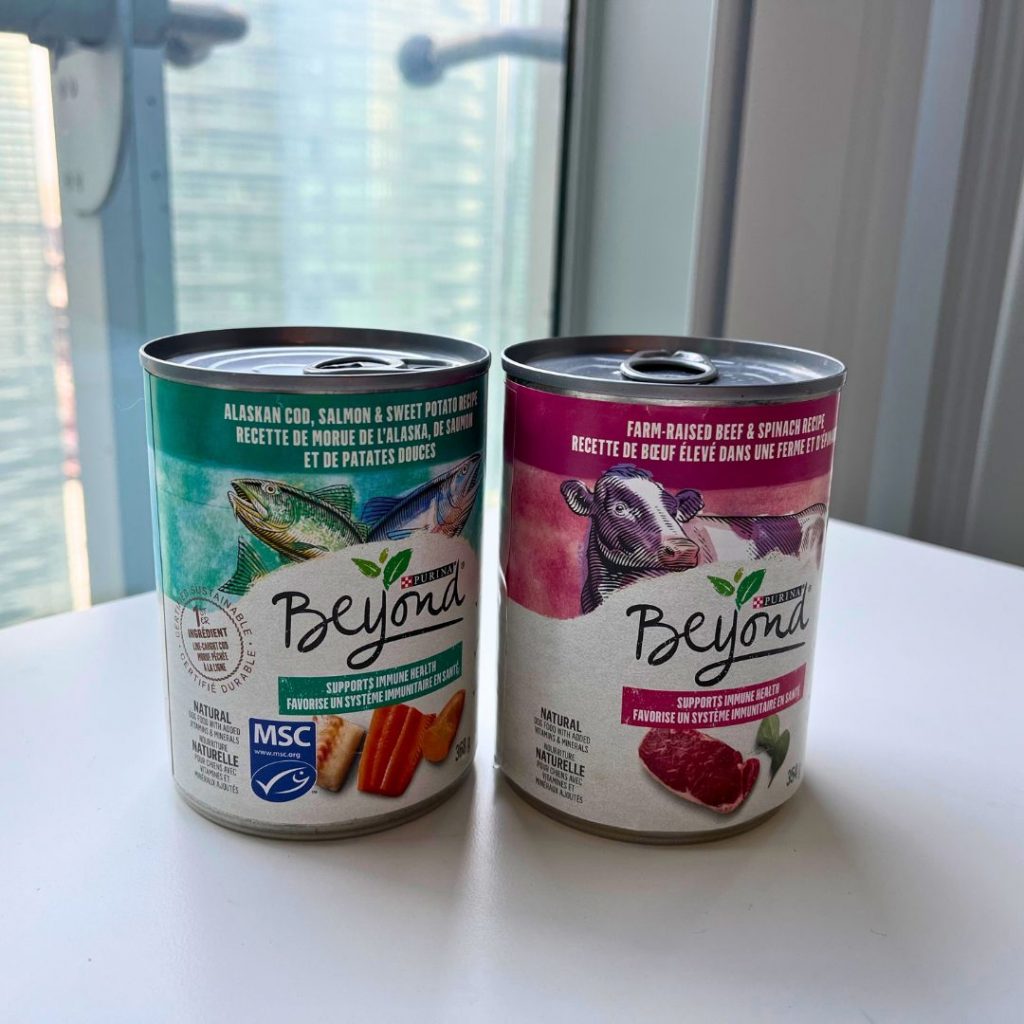
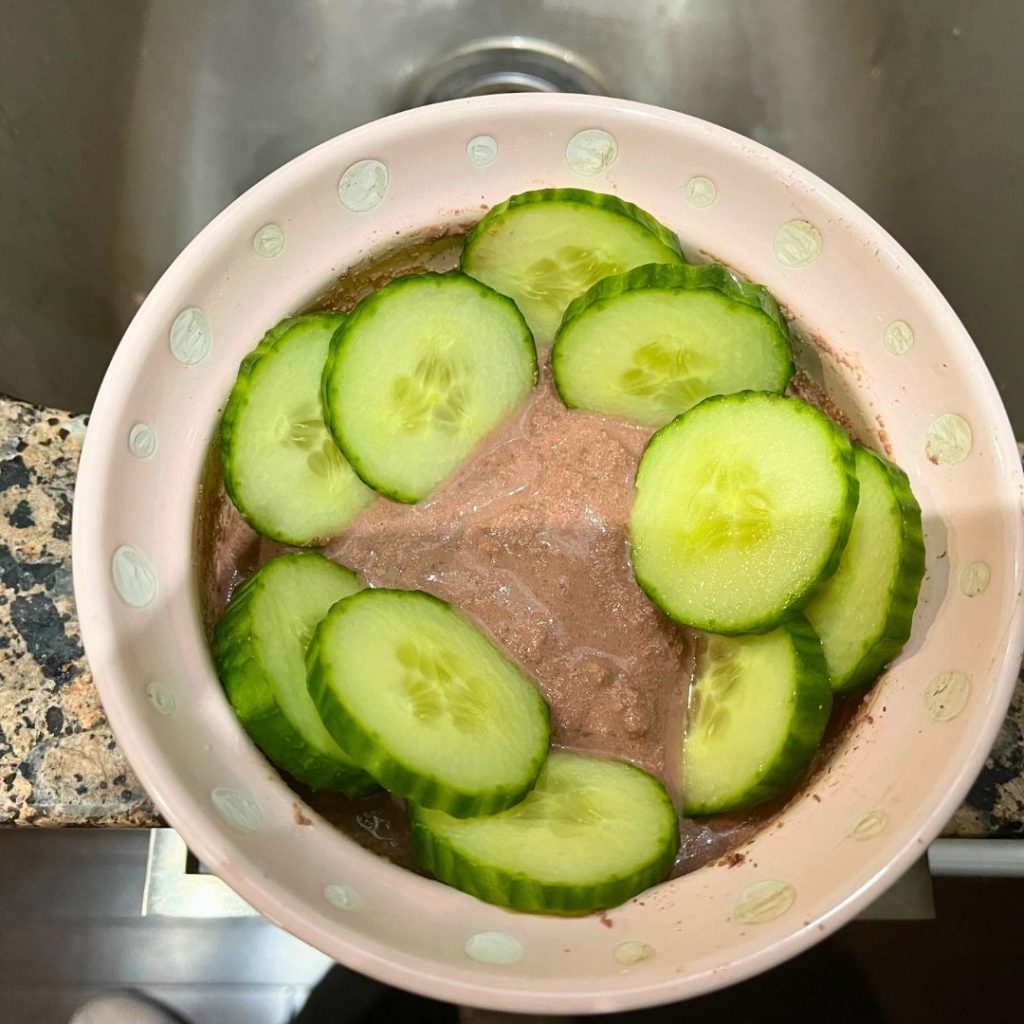
💡 Tips for changing diet: It is important to do it gradually to prevent upsetting their stomach. The way to do this is by slowly introducing the new food while removing the old diet over the course of 1 or 2 weeks.
Final Thoughts
Let’s recap!
Check for any of the following signs to identify dental problems:
- Messy eaters
- Chew on one side
- Rub their face after eating
- Decreased appetite
- Bad breath
- Swollen face
- Bleeding gums
- Wobbly or broken teeth
- Missing teeth
- Heavy tartar on the gums
To help improve your pet’s dental health consider adding soft dental chews, toothbrushes, or dental water to their routine. Consider changing their diet to softer food such as wet or homemade food.
Finally, evaluate if your dog needs a professional cleaning. This is a challenging decision for senior dogs because it requires anesthesia and with that comes potential risks.
Related Articles:
- How to Make Homemade Food for Senior Dogs
- Why My Old Dog Won’t Eat from the Bowl Anymore
- Senior Dog 101: Our Curated Care Guide for Senior Dogs
- How to Help Your Senior Dog Gain Weight
Recent Posts
Is the Dogo App Worth It? Honest Review After Training My Dog
Training your dog shouldn’t feel like another chore, but it often does because, unless you’re a professional trainer, you have to research everything yourself first. And that research can take...
Amazon's Top Black Friday and Cyber Monday Deals for 2024: Dog Products Edition
The holiday shopping season has officially started and Amazon has already released some incredible deals on pet products for Black Friday and Cyber Monday 2024. Here is our curated list of the...
